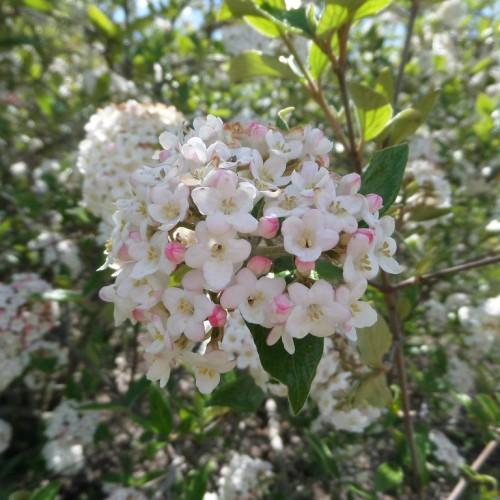
Burkwood viburnum
Viburnum x burkwoodii
Cycle:
Perennial
Watering:
Minimal
Hardiness Zone:
2
Flowers:
Flowers In Spring
Sun:
full sun,filtered shade
Soil:
Acidic, Bog
Fruits:
Fruits In Spring Ready In Autumn
Edible:
Yes
Leaf:
Yes
Growth Rate:
High
Drought Tolerant:
Yes
Salt Tolerant:
Yes
Care Level:
Medium
watering
Water small cranberry plants once every week providing about 1-2 inches of water. Water should be administered slowly so that it can evenly reach and penetrate the entire area of the soil. Additionally, the soil should be kept evenly moist. During dry periods, increase the frequency of watering to twice per week with the same amount of water.
sunlight
Small cranberry (Vaccinium oxycoccos) plants prefer full sun during the summer months and a minimum of 6 hours of sunlight per day. For optimal growth and fruiting, they should receive up to 8 hours of direct sunlight. In areas with intense sun, some afternoon shade may be beneficial. During the winter months, these plants need only 3-4 hours of sunlight each day, as long days of intense sun can prevent flowering.
pruning
Pruning should always be done when the plants are dormant, in early spring before the buds begin to open. Pruning should also be done regularly, after the initial prune in early spring. When pruning a small cranberry bush, it is important to selectively remove stems and branches that are dead, damaged, or diseased. This will help to improve air circulation and reduce the risk of disease spread. It will also allow the plant to focus its energy on producing healthier and more fruitful branches. During pruning, care should be taken to ensure that no more than one third of the bush is removed at any one time. This will help to maintain the health of the bush, and encourage new shoots the following spring. When pruning, always use sharp pruners or shears to help ensure clean cuts. Leaving jagged or split branches increases the risk of disease and can detract from the aesthetics of the bush.
